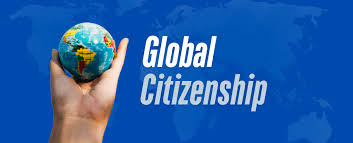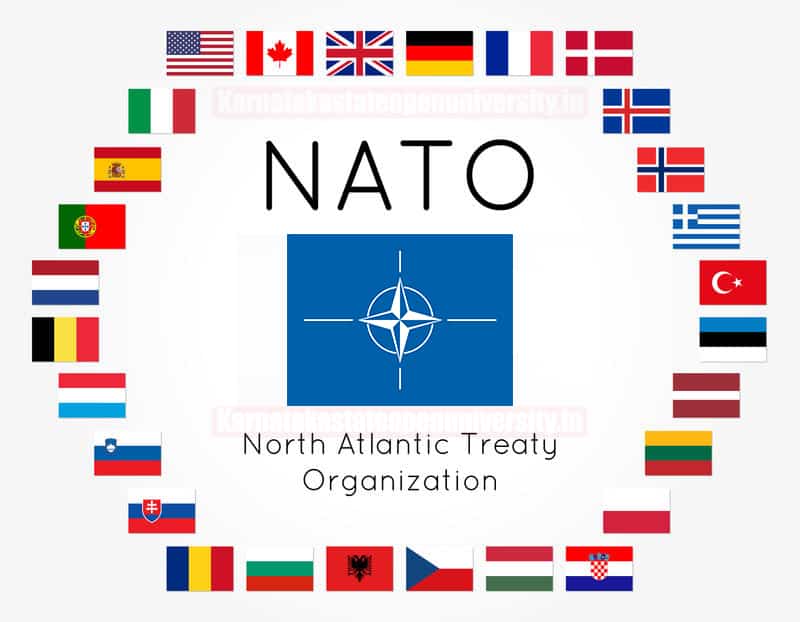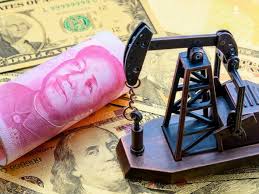Globalisation has transformed the way individuals perceive their role in the world. In the 21st century, global citizenship has gained significant traction, emphasising that people are citizens of their respective nations and members of a broader global community. This shift is driven by technological advancements, increased global interconnectivity, and pressing transnational challenges such as climate change, economic inequality, and geopolitical conflicts.
Defining Global Citizenship. Global citizenship refers to recognising that one’s responsibilities and rights extend beyond national borders. It encompasses an awareness of global issues, a commitment to cross-cultural understanding, and active participation in shaping a just, sustainable, and peaceful world. Global citizenship does not mean renouncing one’s national identity; it is about embracing a broader perspective that acknowledges all people’s shared humanity and interdependence. A global citizen values inclusivity, embraces diversity, and seeks to contribute positively to humanity.
Role of Global Citizenship in Addressing Global Challenges
Global challenges such as climate change, economic inequality, pandemics, and geopolitical conflicts require collective action in an increasingly interconnected world. Global citizenship addresses these issues by fostering awareness, ethical responsibility, and collaborative solutions that transcend national boundaries.
Interconnectivity & Digital Revolution. The digital revolution has transformed global citizenship by fostering instant communication and real-time engagement with global issues. Social media platforms connect people across borders, amplifying voices and mobilising movements like #BlackLivesMatter and #MeToo, which address systemic injustices internationally. Digital activism allows individuals to participate in global discussions, sign petitions, and support humanitarian causes from anywhere in the world. However, this interconnectivity also presents challenges like misinformation and cyber threats. Responsible global citizenship in the digital era requires critical thinking, ethical media consumption, and leveraging technology to promote awareness, advocacy, and positive social change.
Climate Change and Environmental Sustainability. Global citizens are crucial in addressing climate change by advocating for sustainable practices, strong climate policies, and environmental protection. Movements like Fridays for Future, led by youth activists, highlight the power of collective action in demanding policy change. International agreements such as the Paris Climate Accord demonstrate the importance of global cooperation in reducing carbon emissions. Individuals contribute by promoting renewable energy, reducing waste, and holding corporations accountable for environmental damage. Through conscious consumption and advocacy for green policies, global citizens help drive the transition toward a more sustainable future and combat environmental degradation.
Education & Cultural Exchange. Education and cultural exchange are fundamental to global citizenship, fostering understanding, cooperation, and empathy among diverse societies. Programs like Erasmus, Fulbright, and Model United Nations provide students with international exposure, broadening their perspectives on global issues. Learning multiple languages and engaging in cultural immersion experiences help individuals appreciate different worldviews, reduce stereotypes and promote intercultural dialogue. Exposure to diverse traditions and histories cultivates respect and adaptability, essential qualities in an interconnected world. By encouraging inclusive education and international collaboration, global citizens contribute to a more informed, tolerant, and unified global community, strengthening cross-cultural relationships and cooperation.
Human Rights & Social Justice. Global citizenship is rooted in the commitment to human rights and social justice, ensuring that every individual has access to dignity, freedom, and equality. Activists and organisations like Amnesty International and Human Rights Watch work to expose human rights violations and advocate for marginalised communities. Issues such as gender equality, LGBTQ+ rights, and refugee protection require global solidarity, as discrimination and oppression persist in many societies. Digital platforms amplify these efforts, allowing activists to rally international support. Global citizens play a crucial role in creating a more equitable world by actively promoting human rights, challenging injustices, and supporting humanitarian initiatives.
Economic Inequality and Sustainable Development. Global citizens contribute to reducing economic inequality by supporting fair trade, ethical labour practices, and poverty alleviation initiatives. The United Nations’ Sustainable Development Goals (SDGs) provide a framework for addressing global disparities in wealth, education, and employment. Microfinance programs, social entrepreneurship, and impact investing empower underprivileged communities by providing financial resources and business opportunities. Additionally, advocating for corporate responsibility and policies that promote economic justice helps ensure more equitable wealth distribution. By making informed consumer choices and supporting sustainable development efforts, global citizens help create a more inclusive global economy that benefits people across all socioeconomic backgrounds.
Global Health and Pandemic Response. The COVID-19 pandemic underscored the need for global cooperation in healthcare, vaccine distribution, and crisis management. International organisations such as the World Health Organization (WHO), Red Cross, and Doctors Without Borders rely on global solidarity to address health crises and provide medical aid in vulnerable regions. Public awareness campaigns help combat misinformation, promote vaccination, and encourage responsible health behaviours. Additionally, scientific collaboration and data-sharing between countries accelerate medical advancements. By supporting global health initiatives and advocating for equitable access to healthcare resources, global citizens help strengthen international preparedness for future pandemics and health emergencies.
Conflict Resolution and Peacebuilding. Promoting diplomacy, cultural exchange, and international cooperation is essential in preventing and resolving conflicts. Organisations like the United Nations, peacekeeping forces, and humanitarian NGOs work to mediate disputes and provide aid in war-torn regions. Global citizens support these efforts by fostering intercultural understanding and advocating for nonviolent solutions. Education in peace studies and conflict resolution helps individuals develop negotiation skills and a deeper appreciation for diverse perspectives. By promoting dialogue, tolerance, and cooperation, global citizens help prevent violence, address the root causes of conflicts, and contribute to long-term peace and stability worldwide.
Policy Approaches for Global Citizenship
Global Citizenship Education (GCED) Policies. Many countries have embraced UNESCO’s Global Citizenship Education (GCED) framework, incorporating global issues into national curricula. Governments can mandate climate change, human rights, and intercultural dialogue to equip students with the knowledge and critical thinking skills necessary for responsible global engagement. Funding international exchange programs, like Erasmus+, Fulbright, and United Nations Youth Delegates, fosters cross-cultural understanding and cooperation. By integrating global perspectives into education, policymakers help cultivate informed, empathetic individuals who can address global challenges. Strengthening GCED policies ensures that future generations develop the skills and values needed for meaningful international collaboration and problem-solving.
Sustainability and Climate Action Policies. Strong government policies are essential for addressing climate change and promoting sustainability. Legislation supporting renewable energy, waste reduction, and carbon neutrality can significantly reduce environmental damage. Aligning national policies with the United Nations’ Sustainable Development Goals (SDGs) ensures a holistic approach to education, economic growth, and environmental sustainability. Governments can incentivise businesses to adopt green practices, enforce environmental regulations, and promote public awareness campaigns on climate responsibility. By implementing sustainability-focused policies, nations can contribute to global efforts to mitigate climate change while fostering economic and social systems supporting long-term environmental resilience and resource conservation.
Digital Governance and Cyber Ethics. In an increasingly digital world, policies that ensure equitable internet access and responsible online behaviour are crucial for global citizenship. Internet accessibility laws help bridge the digital divide by expanding technological infrastructure and providing affordable connectivity in underserved regions. Governments and tech companies must also regulate misinformation, promoting media literacy initiatives to counter fake news and propaganda. Addressing online hate speech, ensuring data privacy protections, and enforcing international cyber laws create safer digital spaces while upholding free speech. By developing comprehensive digital governance policies, societies can foster an inclusive, ethical, and well-regulated digital environment that benefits all users.
Migration and Human Rights Protections. Effective migration policies are essential for protecting the rights of displaced individuals and fostering inclusive societies. Fair immigration laws, asylum protections, and integration programs ensure that refugees and migrants can access education, healthcare, and employment opportunities. International labour rights policies must safeguard workers from exploitation, providing fair wages and safe working conditions across borders. In collaboration with organisations like the International Labour Organization (ILO) and the United Nations, governments must uphold human rights standards and advocate for policies that promote dignity and equality for all. Strengthening migration policies fosters social cohesion and upholds global humanitarian commitments.Bottom of Form
Practical Implementation Strategies
Educational Institutions. Schools and universities play a vital role in fostering global citizenship through structured programs and initiatives. Implementing mandatory global citizenship modules ensures students engage with sustainability, human rights, and international relations. Study-abroad scholarships and cultural exchange programs enable students to experience diverse perspectives firsthand, promoting intercultural understanding. Additionally, expanding digital learning platforms allows students worldwide to collaborate on global issues, breaking down geographical barriers. Universities can also partner with international organisations to provide experiential learning opportunities, empowering students to apply their knowledge in real-world global contexts and preparing them to contribute meaningfully to society.
Corporate Social Responsibility (CSR). Businesses have a significant role in promoting global citizenship by integrating ethical and sustainable practices into their operations. Companies can adopt fair trade policies, commit to carbon neutrality, and implement diversity and inclusion initiatives to ensure responsible corporate behaviour. Public-private partnerships between corporations, NGOs, and governments can drive large-scale social impact projects, such as renewable energy programs, education funding, and global health initiatives. By prioritising corporate social responsibility (CSR), businesses can contribute to solving global challenges while fostering economic growth. Ethical business leadership encourages accountability and inspires consumers to support companies that align with sustainable and equitable values.
Community and Grassroots Movements. Grassroots activism and community initiatives are essential in translating global citizenship ideals into local action. Encouraging volunteerism in sustainability projects, refugee assistance programs, and human rights campaigns empowers individuals to make a tangible impact. Citizen diplomacy strengthens cross-cultural understanding and global cooperation through cultural exchanges, interfaith dialogues, and local advocacy efforts. These movements rely on collective action, fostering civic responsibility and social change from the ground up. Individuals can bridge the gap between global issues and community-level solutions by supporting local organisations and advocating, creating a more interconnected and compassionate world.
Technology and Media Engagement. The digital space offers powerful tools for promoting global citizenship, but responsible engagement is necessary. Fact-checking initiatives, responsible journalism, and user-based content moderation help combat misinformation and ensure accurate reporting on global issues. Social media campaigns raise awareness about climate change, human rights, and public health, mobilising global audiences for collective action. Platforms like Twitter, Instagram, and TikTok enable activists to amplify their voices, engage in discussions, and influence policy changes. By harnessing technology and media responsibly, individuals and organisations can educate, inspire, and advocate for a more informed, ethical, and connected global society.
Challenges to Global Citizenship
Nationalism and Political Resistance. A significant challenge for global citizenship is the rise of nationalism and political resistance to international cooperation. Some governments prioritise national interests over global collaboration, rejecting policies related to climate action, migration, or human rights. Populist movements often frame global initiatives as threats to national sovereignty, discouraging participation in international agreements. This resistance can hinder efforts to address global issues collectively. Striking a balance between national identity and global responsibility remains challenging, as political divisions and protectionist policies limit cross-border cooperation and create tensions between global and national priorities.
Economic Disparities and Inequality. Global citizenship emphasises inclusivity and equal opportunities, but economic disparities prevent millions from engaging fully in global initiatives. Low-income communities, particularly in developing nations, often lack access to quality education, technology, and international mobility. Wealth gaps between countries affect participation in global decision-making, as poorer nations may struggle to implement policies aligned with global goals like sustainability or digital inclusion. Without addressing structural inequalities, the benefits of globalisation remain concentrated among wealthier nations and individuals, leaving marginalised communities excluded from the advantages and responsibilities of global citizenship.
Cultural and Ideological Differences. While global citizenship promotes cross-cultural understanding, deep-rooted cultural and ideological differences can create barriers. Conflicting values on gender equality, LGBTQ+ rights, and freedom of speech may hinder global cooperation. Some societies resist adopting universal human rights frameworks due to religious or traditional beliefs. Language barriers and lack of cultural awareness can also lead to misunderstandings and misrepresentations. Overcoming these differences requires open dialogue, education, and a commitment to mutual respect, but entrenched cultural divisions continue to challenge the development of a unified global identity.
Misinformation and Digital Manipulation. The internet plays a crucial role in global citizenship, but misinformation, propaganda, and cyber manipulation threaten informed participation. Fake news, deepfakes, and biased media distort public perception of global issues, leading to polarisation and distrust. Some governments and organisations exploit digital platforms to spread false narratives, undermining efforts to promote truth, transparency, and global cooperation. Individuals may struggle distinguishing credible information from misleading content without strong media literacy and fact-checking initiatives. This digital challenge limits the ability of global citizens to engage meaningfully with international issues and advocate for positive change.
Limited Access to Education and Technology. Global citizenship thrives on education and digital connectivity, yet millions lack access to both. In many developing regions, inadequate schooling, lack of internet access, and technological illiteracy prevent individuals from participating in global discourse. Without educational policies promoting global awareness, many people remain unaware of pressing international issues and their role in addressing them. Bridging the digital and educational divide is essential for fostering a more inclusive global citizenry. Still, the high costs of technology and infrastructure development continue to pose challenges, particularly in underserved communities.
Weak International Governance and Enforcement. Global governance structures, such as the United Nations and international courts, promote global citizenship values. However, political conflicts, lack of enforcement power, and differing national interests often limit their effectiveness. Countries may sign international agreements, such as the Paris Climate Accord or human rights treaties, but fail to implement them due to economic or political constraints. Without strong mechanisms for accountability and cooperation, global citizenship remains an aspirational concept rather than a fully realised practice. Strengthening global institutions and ensuring compliance with international commitments is a significant challenge.
Environmental and Climate Barriers. Climate change presents a challenge and a call to action for global citizenship. Rising sea levels, natural disasters, and resource shortages disproportionately impact vulnerable populations, increasing displacement and deepening inequalities. Global responses to climate change often face resistance due to economic interests, reliance on fossil fuels, and inadequate policy enforcement. While sustainability is a key component of global citizenship, the slow pace of international action threatens environmental stability. This challenge requires stronger global leadership, financial investments in green technologies, and greater public awareness to drive behavioural and policy changes.
Ethical Dilemmas and Conflicting Priorities. Global citizenship encourages collective responsibility, but ethical dilemmas and competing interests often complicate decision-making. For example, balancing economic development with environmental sustainability presents conflicts for both governments and corporations. Similarly, addressing human rights violations may require sanctions or intervention, but these actions can create diplomatic tensions. Nations, businesses, and individuals frequently face difficult choices between profit, national security, and ethical considerations. Finding common ground and creating fair policies that align with global citizenship principles remains an ongoing challenge, particularly when immediate economic or political gains conflict with long-term global well-being.
Conclusion
Global citizenship is more relevant than ever in the 21st century. Global citizenship is essential for tackling complex global challenges that no single nation can solve alone. By fostering a sense of shared responsibility, encouraging cross-border collaboration, and promoting ethical engagement, global citizens help create a more just, sustainable, and peaceful world. For global citizenship to be meaningful, it must be backed by strong policies and practical implementation strategies. Governments, educators, corporations, and digital platforms must collaborate to foster inclusive, informed, and action-oriented global citizens. Addressing challenges such as digital inequality, misinformation, and political resistance will ensure that global citizenship leads to real-world impact. While challenges exist, fostering a sense of shared responsibility and ethical engagement can lead to a more just and sustainable world. The balance between national identity and global solidarity will define the future of humanity’s collective progress.
Please Do Comment.
For regular updates, please register your email here:-
References and credits
To all the online sites and channels.
Pics Courtesy: Internet
Disclaimer:
Information and data included in the blog are for educational & non-commercial purposes only and have been carefully adapted, excerpted, or edited from reliable and accurate sources. All copyrighted material belongs to respective owners and is provided only for wider dissemination.
References:-
- Appiah, Kwame Anthony. Cosmopolitanism: Ethics in a World of Strangers. New York: W.W. Norton & Company, 2006.
- Falk, Richard. The Declining World Order: America’s Imperial Geopolitics. New York: Routledge, 2004.
- Sen, Amartya. The Idea of Justice. Cambridge: Harvard University Press, 2009.
- Archibugi, Daniele. “Cosmopolitan Democracy and its Critics: A Review.” European Journal of International Relations, vol. 10, no. 3, 2004, pp. 437-473.
- Benhabib, Seyla. “The End of Sovereignty? Global Citizenship and Democratic Attachments.” Public Culture, vol. 19, no. 3, 2007, pp. 27-39.
- Delanty, Gerard. “The Cosmopolitan Imagination: The Renewal of Critical Social Theory.” The British Journal of Sociology, vol. 57, no. 1, 2006, pp. 25-47.
- Torres, Carlos Alberto. “Global Citizenship and Global Universities: The Age of Global Interdependence and Cosmopolitanism.” Journal of Global Ethics, vol. 4, no. 1, 2008, pp. 45-56.
- Soysal, Yasemin Nuhoglu. “Postnational Citizenship: Reconfiguring the Familiar Terrain.” International Migration Review, vol. 22, no. 4, 1994, pp. 28-51.
- United Nations Educational, Scientific and Cultural Organization (UNESCO). Global Citizenship Education: Preparing Learners for the Challenges of the 21st Century. Paris: UNESCO, 2015.
- United Nations Development Programme (UNDP). Human Development Report 2020: The Next Frontier – Human Development and the Anthropocene. New York: UNDP, 2020.
- World Economic Forum. Shaping the Future of Global Education: The Role of Technology in Global Citizenship. Geneva: WEF, 2021.
- Amnesty International. Annual Report on Human Rights and Global Justice 2022. London: Amnesty International, 2022.
- Carnegie Endowment for International Peace. Global Order 2025: The Future of International Cooperation. Washington, D.C.: Carnegie Endowment, 2018.
- United Nations Sustainable Development Goals (SDGs). The Role of Global Citizenship in Achieving the SDGs. United Nations, 2023.
- Global Peace Index 2023. Measuring Peace in a Complex World. Institute for Economics & Peace, 2023.
- The Elders. “A Call for Ethical Leadership in Global Governance.” The Elders, 2022.
- World Bank. The Future of Global Citizenship in an Age of Digital Transformation. Washington, D.C.: World Bank, 2022.



